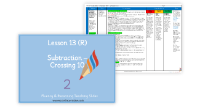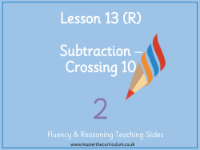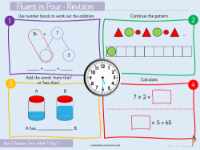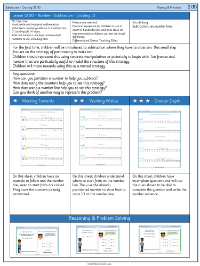Addition and subtraction - Subtraction crossing 10 - Planning
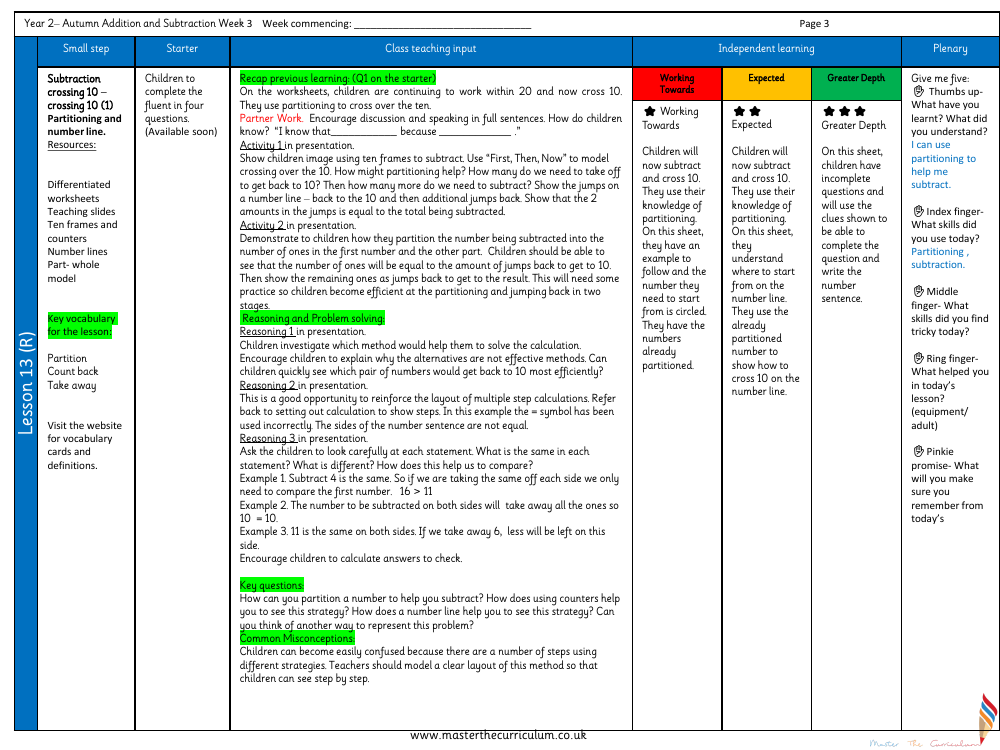
Maths Resource Description
In this Year 2 Autumn lesson on Addition and Subtraction, the focus is on teaching students the concept of subtraction crossing 10. The lesson plan is structured to include a starter, class teaching input, independent learning, and a plenary. The instructional materials provided for the lesson include differentiated worksheets, teaching slides, ten frames with counters, number lines, and part-whole models. The key vocabulary terms such as 'partition', 'count back', and 'take away' are emphasized, with resources like vocabulary cards and definitions available to aid understanding. The children start by completing 'fluent in four' questions, which help to recap their previous learning on working within 20 and crossing 10 using partitioning. This sets the stage for the day's activities, which involve partner work to encourage discussion and the use of full sentences to explain their reasoning.
During the class, the children are shown how to use ten frames to model subtraction that crosses over the 10 boundary and are encouraged to think about how partitioning can assist in this process. They learn to use number lines to visualize the subtraction in two stages, first getting back to 10 and then subtracting the remaining amount. The lesson includes reasoning and problem-solving activities where children evaluate different methods, identify efficient strategies, and compare statements to understand the principles of subtraction crossing 10. The lesson plan also outlines progression from 'Working Towards' to 'Greater Depth', with each level providing a tailored approach to mastering the subtraction technique. The children are encouraged to reflect on what they've learned, the skills they've used, and what they found challenging, ensuring they remember the key steps of the method. A clear layout of the method is recommended to avoid common misconceptions and to make the multi-step process more understandable for the students.
